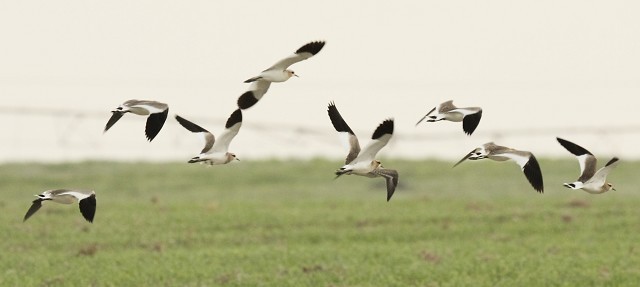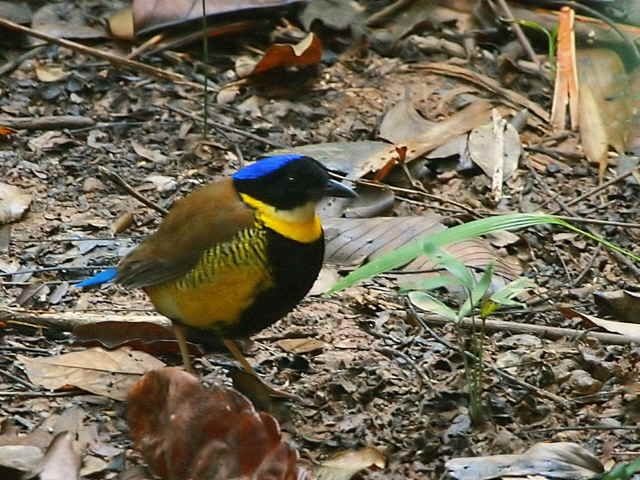Facing Extinction

Opening with a discussion of rarity, from psychological experiments on the attraction of rarity, to the nature of rarity and the rarity of nature, the book strikes an initial upbeat note: of the 10,000 or so birds, fewer than 2% qualify as Critically Endangered and the number of Data Deficient species is also relatively low. It successfully hurdles the potential stumbling blocks of explaining tricky theories (anthropogenic Allee, etc.) with startling ease — clarity characterises the writing in this book — before it settles into the species case studies. The Sociable Lapwing starts, setting out the basic template: a decline, a frantic search for a cause and then the conservation efforts and their effects. The 20 species it features are spread globally and in varying states of peril, from the Stephen's Island Wren (extinct for c.100 years) and current cause célèbres such as the Spoon-billed Sandpiper (200 pairs maximum) to the downright obscure Alagoas Curassow. All species illustrate different issues, processes or effects. Despite being grouped into four broad themes, there is very little overlap between chapters, hence it stays fresh and distinct and illustrates the breadth of the issues at hand.
The topic is nothing original. Recent years have seen a glut of books on extinction, but Facing Extinction succeeds in not being a dry rehashing of scientific papers or a self-righteous exercise in guilt-tripping. Instead, it is the quality of its stories: some horrifying and some hopeful, but all are compelling. A book like this cannot be much more than a marker in time, but with population statistics as recent as 2010 (where available) it is as up to date as it possibly can be.

Sociable Lapwing, Qatar (Photo: anon)
Science and narrative are confidently interwoven and the result is both edifying and accessible; this is not death by statistics, bar charts and formulae but is instead delivered in accessible language. In tone and style, it's as middle-of-the-road as possible for a popular academic text, but this shouldn't be off-putting. Impartial delivery is the strength of academic writing, and so it avoids slipping into an exaggerated, preachy rhetoric; the paragraphs touching on global warming are apocalyptic enough without it. The dearth of literary style does emphasise its occasional flourishes, for example, the simile about Kazakhstan's Black Larks — 'coal-black males dot the snowy wastes like the eyes of legions of melted snowmen' — was a surprise in the Sociable Lapwing chapter. Sporadically they lift the prose, but what it might lack in literary merit and flow, it regains in a startling clarity. Terminology and theories are dealt with clearly, concisely and with the confidence that comes with expertise, which makes reading this book such a painless exercise. It is truly remarkable how easy to read and yet thorough this book is; all birders should be able to read it, enjoy it and learn from it. Similarities in style bridge the seams between the writers; it doesn't read or feel like the product of a cross-conservation-organisation committee.
Unexpectedly, Facing Extinction features the very best and worst of humanity. Humans accidently introduced the House Mouse to Gough, which are now consuming three tonnes of native plants, insects and birds every day, including Tristan Albatross chicks, 300 times bigger than their killers. More infuriatingly, humans trapped the Spix's Macaw into its status of 'Extinct In The Wild'; accidently poisoned the Asian Gyps vultures into vertiginous declines of over 99%; made firewood for tourists from the Peruvian Polylepis forests, further fragmenting the Royal Cinclodes's range; and played politics with the Po'ouli. Broadly, humanity has the blood of the global avifauna on its hands. Yet all this contrasts with people like Pedro Nardelli, an aviculturist who, for over 10 years, held the entire population of the Alagoas Curassow in his private collection, while the Brazilian government's conservation authority was "crippled by bureaucracy and lack of financial support"; or Philip Round's tireless efforts in Thailand to rediscover the glorious Gurney's Pitta. For all its impressive research and scholarly merit, it is these stories that elevate the book from a heavyweight scientific tome into a compulsive read.

Gurney's Pitta, Thailand (Photo: Ian Fulton)
At 312 pages (including 24 pages of references) and £45, it is both small and expensive. Price pitches it at the hardback heavyweights — the New Naturalists and the family monographs — but as a book it couldn't be more different. The nature of the subject matter makes it more important, but it lacks the practical application to field birding in Britain that makes other similarly priced books essential. However, for your money, the production quality is fantastic throughout the book, the editing is faultless and the frequently used photographs, sketched vignettes (by Jan Wilczur) and maps are all of a good quality. Appropriately all the royalties from the book will be donated to BirdLife's Preventing Extinction programme.
It's hard to pick out one element of this book that stands superior to the rest. Pitched perfectly for birders, not patronisingly dumbed down or needing a degree for comprehension, it's a uniquely easy and edifying read, which combined with the importance of its subject matter makes it an indispensible reference.
Facing Extinction Paul Donald, Nigel Collar, Stuart Marsden and Deborah Painby is published by Poyser, 2010.
Hardcover. 312 pages.
RRP £45.00. ISBN: 978-0-7136-7021-9


